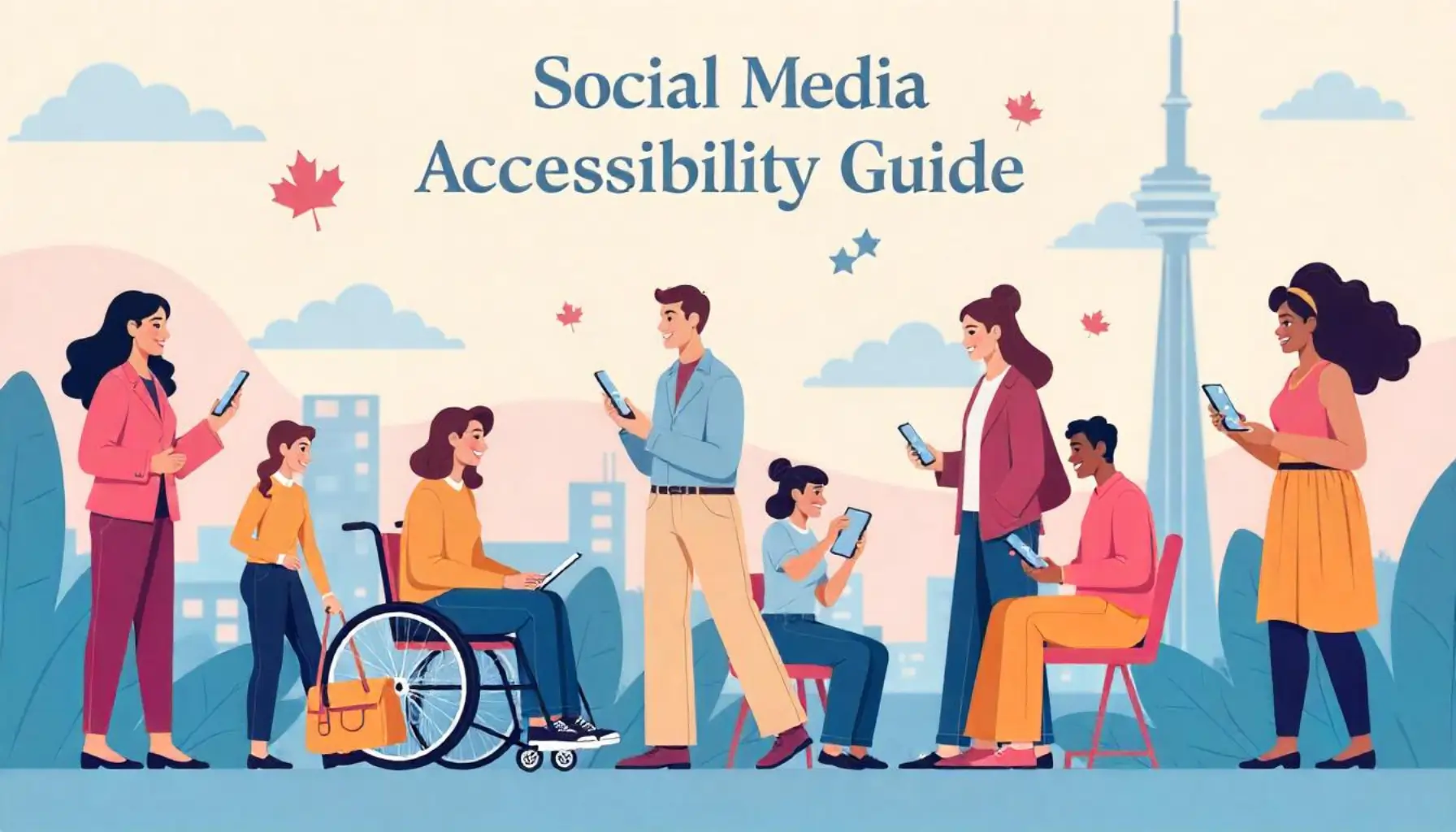The Accessible Canada Act (ACA) represents a significant milestone in creating an inclusive and barrier-free Canada. Enacted in 2019, the ACA’s primary goal is to identify, remove, and prevent accessibility barriers in federal jurisdictions, ensuring equal participation for all Canadians, particularly individuals with disabilities. This comprehensive legislation is crucial to building an inclusive society where accessibility is a fundamental right, not a privilege.
What is the Accessible Canada Act?
The Accessible Canada Act (ACA) is a federal law designed to eliminate barriers in areas under federal jurisdiction, such as transportation, communications, and federally regulated workplaces.
The Act was introduced to address systemic accessibility challenges and promote inclusivity across Canada. It matters because it directly impacts millions of Canadians with disabilities, empowering them to participate fully in society without facing unnecessary obstacles.
The ACA emphasizes proactive measures to prevent barriers rather than reacting to complaints, setting a new standard for accessibility legislation.
Key Principles of the Accessible Canada Act
The Accessible Canada Act is built on several guiding principles that reflect its commitment to inclusivity and equality:
- Dignity: Ensuring that individuals with disabilities are treated with respect and value.
- Equality of Opportunity: Providing equal access to opportunities for all Canadians, regardless of ability.
- Barrier-Free Access: Removing physical, systemic, and digital barriers that impede participation.
- Inclusive Design: Encouraging the development of environments and services that are accessible from the outset.
- Meaningful Participation: Engaging individuals with disabilities in the development and implementation of accessibility measures.
Organizations and Sectors Covered in The Accessible Canada Act
The accessibility legislation Canada applies to areas under federal jurisdiction, including:
- Transportation: Airlines, railways, interprovincial buses, and ferries.
- Communications: Broadcasting, telecommunications, and internet services.
- Banking and Finance: Federally regulated financial institutions.
- Federal Workplaces: Government departments, Crown corporations, and federally regulated private sector businesses.
- Public Services: Services provided by federal agencies and entities.
Essential Requirement for Organizations under the Accessible Canada Act
To comply with the Canadian accessibility standards, organizations must:
- Develop Accessibility Plans: Outline strategies for identifying, removing, and preventing barriers.
- Establish Feedback Mechanisms: Create systems to gather and address feedback on accessibility issues.
- Prepare Progress Reports: Regularly update on the implementation and effectiveness of accessibility measures.
- Meet Accessibility Standards: Align operations with the standards established by the ACA to ensure barrier-free access.
Which Provinces in Canada Have Accessibility Legislation?
While the Canada accessibility act focuses on federal jurisdictions, several provinces have enacted their own accessibility laws to address local needs:
- Alberta: While Alberta does not have a specific comprehensive accessibility law, its Human Rights Act protects individuals with disabilities against discrimination in various areas including employment, public services, and housing.
- British Columbia: The Accessible British Columbia Act (2021) aims to create a barrier-free province by enhancing inclusivity in public and private sectors, establishing a framework for removing obstacles to accessibility in key areas such as information and employment.
- Manitoba: The Accessibility for Manitobans Act (AMA) (2013) focuses on removing barriers in customer service, employment, and public spaces. It sets standards for accessibility that must be adhered to by both private and public organizations.
- New Brunswick: New Brunswick’s New Brunswick Accessibility Act (2016) works toward creating an accessible province by addressing barriers in key areas such as transportation, employment, and education.
- Newfoundland and Labrador: The Newfoundland and Labrador Accessibility Act (2021) targets accessibility improvements in public buildings, transportation, and services. This legislation aligns with the goal of ensuring a barrier-free environment for people with disabilities.
- Northwest Territories: The Northwest Territories Accessibility Act (2019) is aimed at improving accessibility across the territory, with a focus on creating accessible public spaces, employment opportunities, and services.
- Nova Scotia: The Nova Scotia Accessibility Act (2017) is a key piece of legislation, aiming to make Nova Scotia fully accessible by 2030. It addresses barriers in education, employment, transportation, and other areas critical to ensuring accessibility.
- Nunavut: While Nunavut does not have a specific accessibility law, the territory adheres to federal accessibility legislation and implements various initiatives to support inclusivity and accessibility.
- Ontario: Ontario’s Accessibility for Ontarians with Disabilities Act (AODA) (2005) is one of the most well-known accessibility laws in Canada. It aims to make the province fully accessible by 2025, covering areas like customer service, employment, and transportation, though achieving this is an ongoing process.
- Prince Edward Island (PEI): The Accessibility Act (2017) in PEI works to identify and remove barriers for individuals with disabilities, focusing on public services, housing, transportation, and employment.
- Quebec: Quebec has long had the Act to Secure Handicapped Persons in the Exercise of Their Rights (1978, updated in 2004), which requires public agencies and municipalities to adopt accessibility measures and remove barriers to accessibility.
- Saskatchewan: Saskatchewan does not have a dedicated provincial accessibility law, but it has incorporated accessibility provisions within its Human Rights Code to protect people with disabilities from discrimination.
- Yukon: The Yukon Accessibility Act (2021) aims to improve accessibility in various areas, including public services, employment, and the built environment.
How Businesses can Prepare for Compliance with the Accessible Canada Act?
To prepare for compliance with the Accessible Canada Act, businesses should take proactive measures:
- Conduct Accessibility Audits: By conducting regular accessibility audits, businesses can identify existing barriers in facilities, digital platforms, and processes.
- Develop a Comprehensive Accessibility Plan: Address specific barriers with clear objectives and timelines.
- Train Employees: Equip staff with knowledge about accessibility standards and inclusive practices by providing
- Engage Stakeholders: Involve individuals with disabilities in planning and decision-making.
- Monitor and Update: Continuously review and refine accessibility measures to adapt to evolving standards and feedback.
The Impact of the Accessible Canada Act on Canadians
The Accessible Canada Act has a profound impact on improving accessibility for Canadians with disabilities. By removing barriers in transportation, communications, and public services, the Act fosters greater independence and social inclusion. It also benefits society as a whole by promoting diversity, enhancing economic participation, and creating equitable opportunities for all Canadians.
Conclusion
The Accessible Canada Act is a transformative step toward creating a barrier-free Canada. By understanding its purpose, principles, and requirements, organizations can take meaningful action to comply with the Act and foster inclusivity. As accessibility becomes a shared responsibility, Canadians can look forward to a future where everyone has the opportunity to thrive.
Frequently Asked Questions
Does the Accessible Canada Act apply to all provinces?
No, the ACA applies to areas under federal jurisdiction. However, provinces have their own accessibility laws to address regional needs like the Nova Scotia Accessibility Act, the British Columbia Act, and so on.
What happens if an organization does not comply with the Accessible Canada Act?
Non-compliance can result in penalties, fines, and reputational damage, as well as missed opportunities to serve all Canadians effectively.
How does the Accessible Canada Act support people with disabilities?
The ACA removes barriers and promotes inclusivity, empowering individuals with disabilities to participate fully in society.
How does the Accessible Canada Act impact businesses?
Businesses benefit from increased market reach, improved customer satisfaction, and enhanced brand reputation through compliance.
What are the key requirements for organizations under the Accessible Canada Act?
Organizations must develop accessibility plans, establish feedback mechanisms, prepare progress reports, and comply with accessibility standards.
Which organizations must comply with the Accessible Canada Act?
The ACA applies to federal workplaces, transportation services, communication providers, and other federally regulated entities.
Does the Accessible Canada Act apply to small businesses?
Yes, small businesses in federal jurisdictions must comply with ACA, but their accessibility plans can be scaled to their size and resources.







